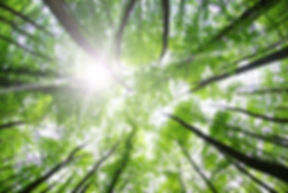
Sustainability of Project
The fruit trees are more of a long term solution to hunger and malnutrition because it takes at least 3 years for the trees to start producing fruit. But once the tree is established, it requires almost no maintenance and can produce a large amount of fruit up to twice per year. In the long run, this is more practical than creating community gardens everywhere because there are no wells, pumps or fencing that have to keep being replaced. The trees provided to the families involved will also help them with hunger because they will be able to sell the fruit and supplement their income.
VNGPS can plant trees at a cheaper rate than most other tree planting projects because they don’t need to buy tree saplings since they have a tree nursery that their own volunteers take care of for free. But what is the point of planting trees if you don’t know how many of them will survive to adulthood? Well, the volunteer network is so large that every village and neighborhood that VNGPS plants trees in has volunteers that routinely check the status of the trees planted. If a family or other tree sponsor fails to take care of the tree, the sapling is dug up and given to someone else. Fortunately this rarely happens.
The 22 acre community farm in Fonde Elimane may sound rather small, but it can help many people. The average yield of rice in the region is about 3.3 tonnes per hectare (1.3 tonnes per acre). With the average per capita rice consumption of 0.22 tonnes per year, one acre of rice can feed 6 people for a year. So two rice harvests per year can feed 12 people per year. Since they can grow vegetables during the cold season which sell for 2 or 3 times what their rice yield would be worth on the same plot of land, one acre could theoretically support 24-30 people per year. So 22 acres of land could theoretically feed 500-660 people per year. So the community farm in Fonde Elimane has a lot of potential to supplement the food supply of many families and it is estimated that it could directly benefit 1,000 people.

But how much of this food will the farmers get to keep for themselves? Most of it! Although they will have to pay for the small amount of gas required to pump the water from the river, the rest of the food, or money that they get from selling the food, will get to be kept by the families. This is what makes this community farm different from most other farms in the region.
The reason that it is not profitable to be a farmer in Northern Senegal is because most people are trapped in a cycle of debt every year. They have to pay rent for their land, they are overcharged for the water, and they sell a large amount of their harvest just to buy the synthetic fertilizers and pesticides used on their fields. It is not uncommon for farmers to break even. This is why so many people are leaving the region.
Organic agriculture doesn’t make sense everywhere, but it is very practicle in Northern Senegal where synthetic chemicals are extremely expensive to the average farmer. Additionally, the sole reliance on synthetic fertlizers in the region has led to a decrease in the land’s fertility. Yields in Northeastern Senegal used to be double what they are now. So teaching the people of Fonde Elimane how to grow crops with natural fertilizers and homemade pesticides can save them a lot of money and allow them to keep all their harvest. Additionally it will help them to preserve the fertility of the land.
